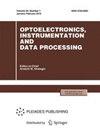Methods for the Formation of Spatiotemporal Clusters of Objects in an Unfriendly Environment
Abstract
The conflict situation associated with the motion of clusters incorporating several hundreds of small-size control objects in the responsibility field of the radar station of an external observer is considered. The task of an external observer is to trace and follow the motion of a cluster and, in the case of hostile situation, act on it. The task of the cluster is to create a maximum uncertainty of decision making by the external observer. The cluster motion model is developed as a Reynolds swarm behavior model complemented with special coefficients. Three methods for the formation of different clusters close to geometric structures transformed in the process of motion are developed. The hypothesis that it is potentially possible to create the situations when a swarm will be perceived by an external observer as an integer large object rather than the original one by varying the geometry, shape, and number of objects in a swarm cluster is formulated and confirmed by mathematical modelling. It is shown that the clusters simulating hostile objects can be created if the decision making criterion is the effective dispersion area.

 求助内容:
求助内容: 应助结果提醒方式:
应助结果提醒方式:


